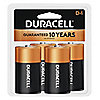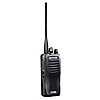- Catalog
- Find A Branch
- KeepStock
- Help
- 1-800-GRAINGER
Sign In
Sign In to access your account information.
Sign In Register for Grainger.comOrder Lookup
Track and check the status of an order.
Order LookupAll Products
Unrelated Links
Product Categories
- All Product Categories
- Abrasives
- Adhesives, Sealants and Tape
- Cleaning and Janitorial
- Electrical
- Electronics & Batteries
- Fasteners
- Fleet & Vehicle Maintenance
- Furnishings, Appliances & Hospitality
- HVAC and Refrigeration
- Hardware
- Hydraulics
- Lab Supplies
- Lighting
- Lubrication
- Machining
- Material Handling
- Motors
- Office Supplies
- Outdoor Equipment
- Packaging & Shipping
- Paints, Equipment and Supplies
- Pipe, Hose, Tube & Fittings
- Plumbing
- Pneumatics
- Power Transmission
- Pumps
- Raw Materials
- Reference and Learning Supplies
- Safety
- Security
- Test Instruments
- Tools
- Welding
Sign In
Sign In to access your account information.
Sign In Register for Grainger.comOrder Lookup
Track and check the status of an order.
Order LookupAccording to the National Oceanic and Atmospheric Administration (NOAA), flooding has caused more damage in the U.S. than any other severe, weather-related event.
Download this checklist to make sure you have the products and resources that can help keep people and property safe in a flooding emergency.
We're in Your Neighborhood - Our network of branches across the U.S. can give you immediate access to what you need to help handle disruptions in your operations. Find your local branch at grainger.com/branches
![]() Products For Prepare
Products For Prepare
![]() Products For Respond and Recover
Products For Respond and Recover
TIPS TO PREPARE
- Communicate and test a comprehensive emergency plan with your staff.
- Elevate power components if susceptible to flooding.
- Install check valves in sewer traps to prevent backup.
- Construct barriers to prevent floodwater from entering.
- Seal walls with waterproofing compounds to avoid seepage.
TIPS TO RESPOND AND RECOVER
- Do not enter the facility if you smell gas or if flood water still surrounds the building.
- If you have any doubts about safety, do not enter until the facility is inspected by a qualified building inspector or structural engineer.
- Before you enter your facility or building, walk carefully around the outside and look around for loose power lines or structural damage.
- Keep a battery-powered radio with you so you can listen for news updates.
- Do not return to the flood zone until local officials declare the area safe.
- Buildings often sustain hidden damage in foundations; enter with extreme caution.
- Listen for emergency information on a battery-operated radio or television.
- Service damaged septic tanks, cesspools, pits and leaching systems as soon as possible.
- Avoid floodwater: it may contain oil, gasoline, or raw sewage.
- Remember, floodwater may be electrically charged.
![]() Resources
Resources

DEPARTMENT OF HOMELAND SECURITY PREPAREDNESS FOR BUSINESS


 Floods
Floods 

























